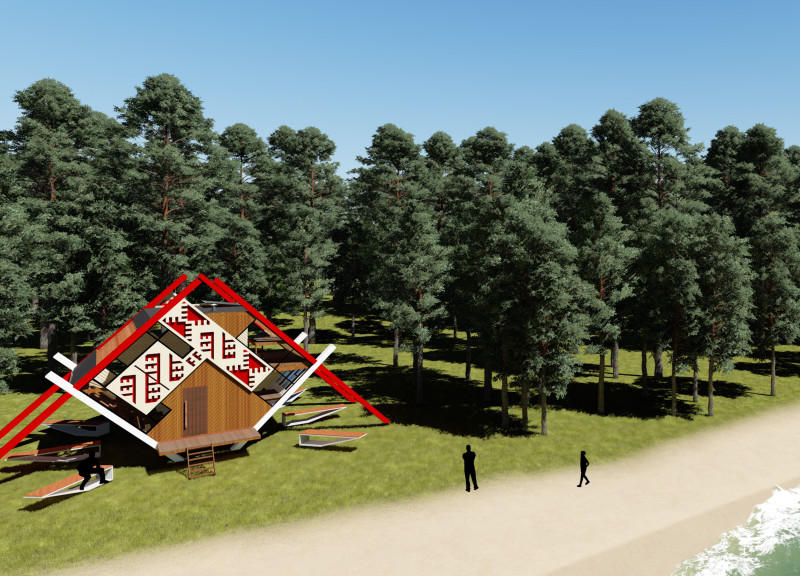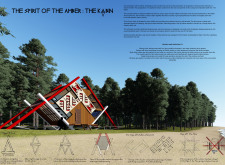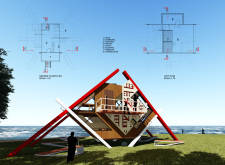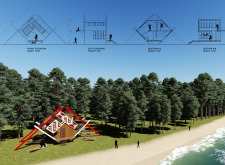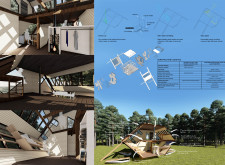5 key facts about this project
At its core, the project embodies principles that prioritize user experience and environmental responsibility. Its primary function as a mixed-use development underscores its commitment to fostering interaction among diverse groups. By combining residential and communal spaces, it encourages a vibrant community atmosphere while addressing the urban demands of its location. This multifaceted nature allows the building to adapt to various uses throughout the day, promoting a lived-in feel at all hours.
One of the most notable aspects of this architectural design is its careful consideration of materiality. The selection of materials such as reinforced concrete, low-emissivity double-glazing glass, and sustainable timber demonstrates a focus on durability and environmental sensitivity. Reinforced concrete is utilized not only for its structural qualities but also for its capacity to reduce the overall carbon footprint through thoughtful design. The choice of glass promotes an abundance of natural light within the building, providing a warm, inviting environment while ensuring energy efficiency through glazing technologies. The use of sustainable timber adds a natural element to the design, enhancing its aesthetic warmth and supporting eco-friendly practices.
The architectural design incorporates intricate details that enhance both form and function. The façade features a harmonious interplay of textures, creating visual interest while providing essential shading and ventilation. This layered façade design is not only aesthetically appealing but also plays a crucial role in regulating the building's internal climate. The integration of green roofs aligns with the project’s sustainable goals and fosters biodiversity, further connecting the building to the natural landscape.
Spatial organization within the building is meticulously planned to facilitate interaction and flow. Open-plan areas promote social engagement, allowing occupants to navigate seamlessly between spaces. This openness contrasts with private zones designed for relaxation and retreat, illustrating a sophisticated understanding of varying user needs. Moreover, the inclusion of community spaces, such as co-working areas and communal gardens, speaks to a vision of inclusivity and connection, reflecting the architectural intent to cultivate a sense of belonging among residents and visitors alike.
One of the unique design approaches of this project is its responsiveness to the local context. The architectural language draws inspiration from regional characteristics, adapting forms and materials that resonate with the surrounding environment. This responsiveness fosters a sense of place, anchoring the structure within its community while redefining the urban landscape. The design demonstrates an awareness of local heritage and a commitment to enhancing the existing urban fabric through its modern sensibility.
Further enhancing the project’s relevance is its focus on sustainability. Thoughtful solutions such as rainwater harvesting, solar panel integration, and effective insulation systems are incorporated to minimize operational energy use. This comprehensive approach to sustainability highlights the architects' intention to create a resilient building that remains sensitive to the natural environment.
Overall, the project is a compelling example of contemporary architecture that balances form, function, and sustainability. Its unique design elements and material choices work in tandem to create a space that is both functional and aesthetically pleasing. For those interested in exploring the architectural nuances of this project, including architectural plans, architectural sections, and architectural ideas, further details are available in the project presentation. Engaging with these aspects will provide deeper insights into how this architectural endeavor manifests its vision and purpose within its community and environment.


